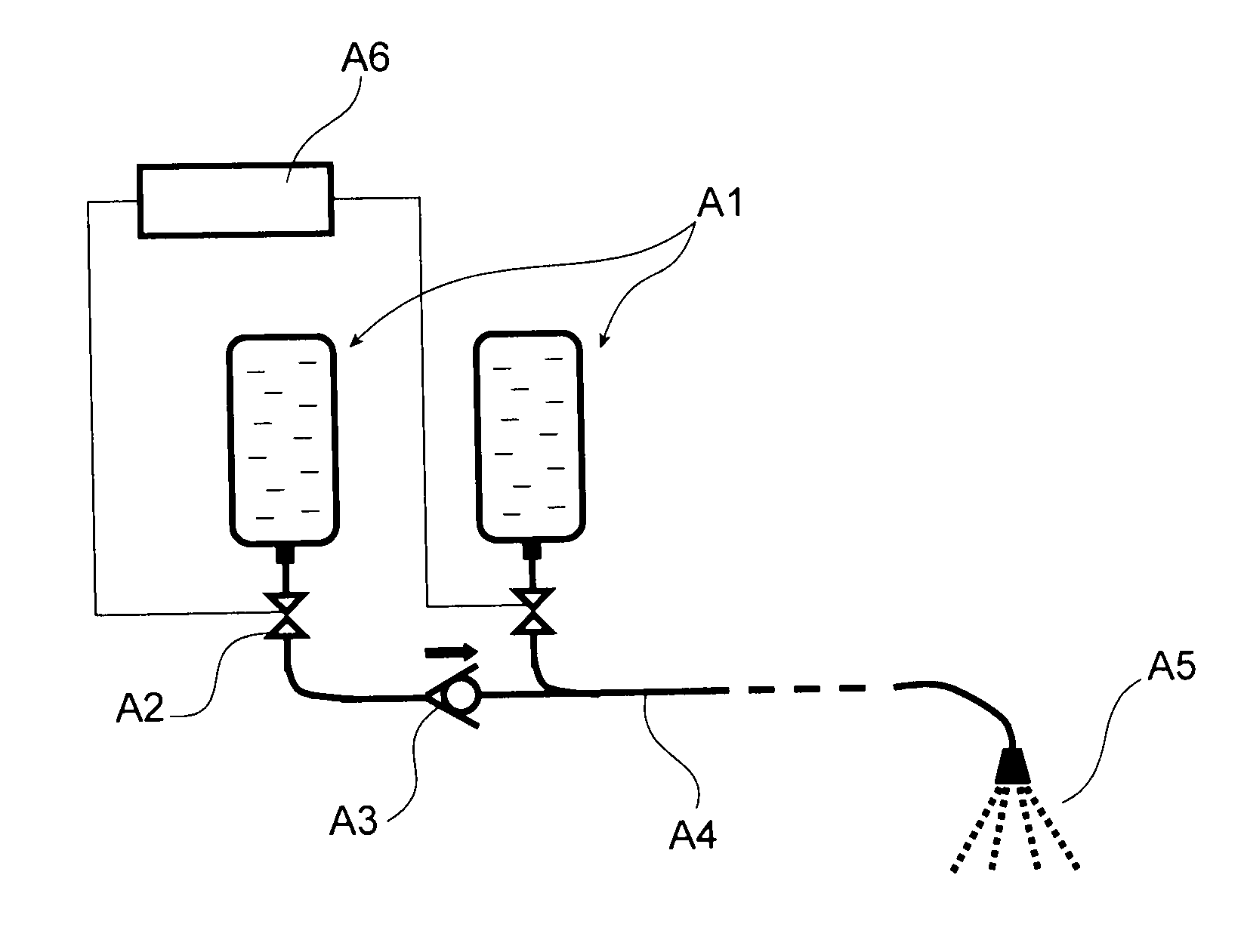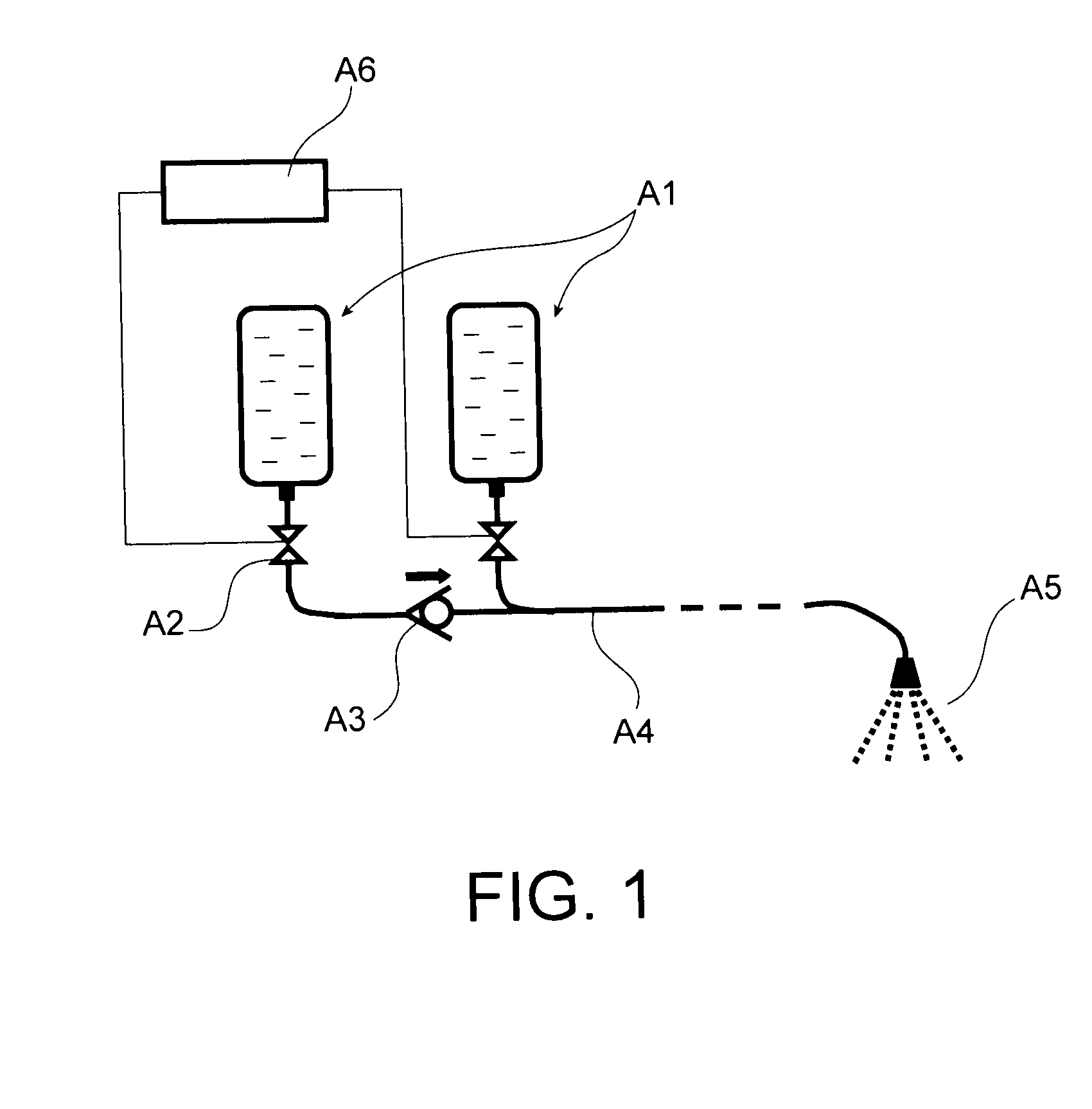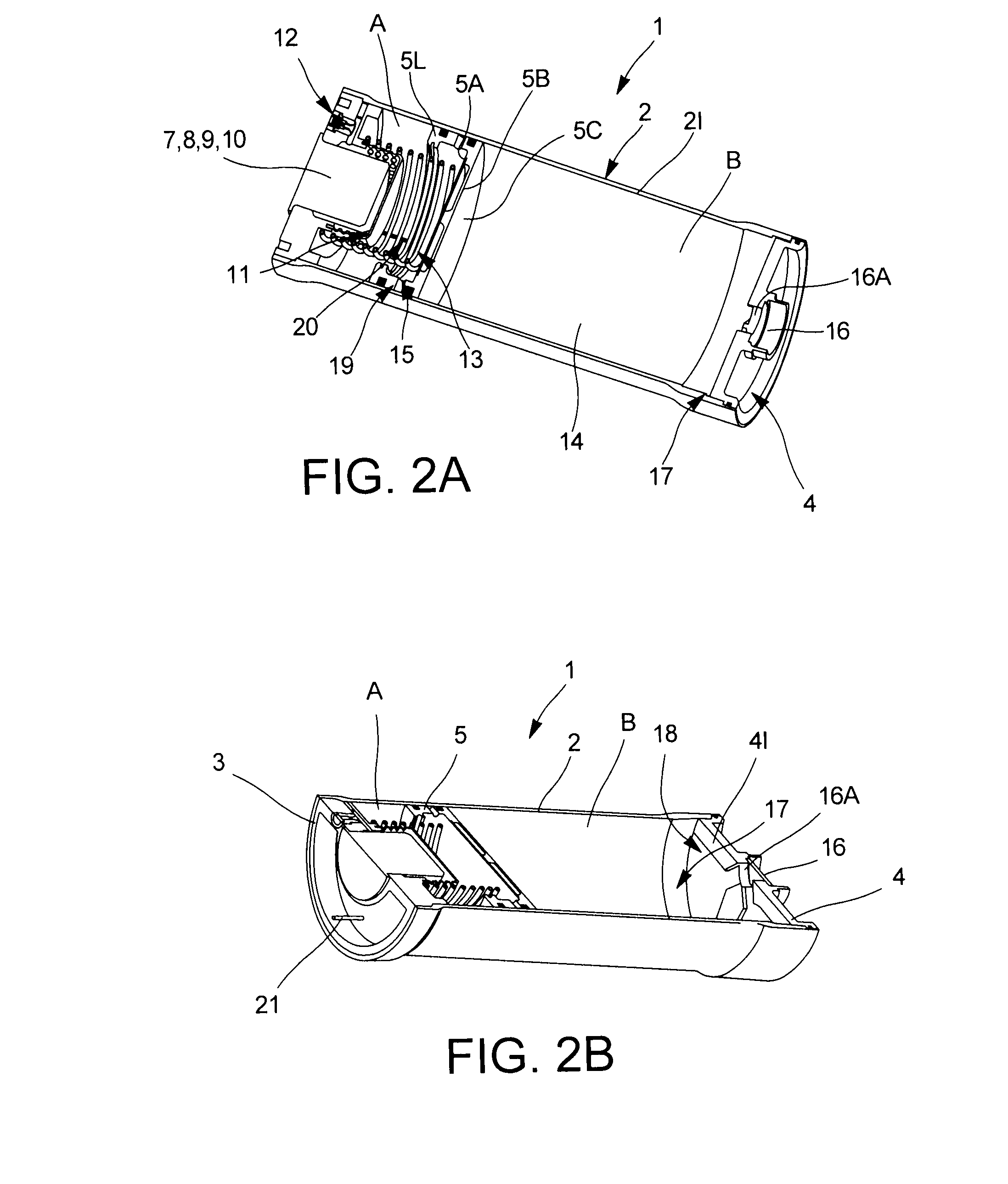A significant drawback of this type of pressurized extinguishers is their sensitivity to microleaks, which submits them to severe monitoring, inspection and maintenance conditions.
Indeed, in the absence of
thermal insulation, the extinguishing agent may rapidly absorb the calories of the generated gas and thereby reduce the efficiency for ejecting the extinguishing agent.
These volume variations may induce
overpressure in the pressurization chamber, which has several major drawbacks.
Indeed, the constraints as regards safety imposed by international regulations in the aeronautical field make the implementation delicate and complex of devices subject to internal
overpressure close to areas which may be supplied with extinguishing agent, in particular in proximity to the engines.
Indeed, these devices are likely to be damaged during exterior incidents, for example by ejection of engine parts, by heat or flames.
In the same way, explosion of these devices may damage the relevant areas.
This solution leads to an increase in the overall
mass of the extinguisher, which is a penalty for the performances of the aircraft.
However, moving it away requires the use of a greater distribution duct length between the extinguisher and said areas, which increases the linear pressure loss in the duct and reduces the ejection efficiency.
Further, the required significant duct
mass is also a penalty.
This requires a
complex control system and valves able to be driven in both directions, opening and closing, i.e. containing mobile parts and subject to sealing defects.
The complexity of such a device makes its maintenance costly and reduces its reliability when it is used for safety devices where said device may remain passive for years and should operate perfectly when the time comes.
On the other hand, once the cap is pierced, the latter can no longer ensure closure of the connection of the reservoir with the distribution circuit.
Indeed, as the distribution circuit A4 is empty when the device is not operating, i.e. during times which may attain years, such valves may be subject to jammings caused by condensation which may occur in such circuits, particularly when the device is installed in an aircraft in a non-pressurized area and is therefore subject to
temperature and pressure variations over a large amplitude during each flight.
When it is used as a fire-fighting device or as an emergency device, it may remain inactive for very long periods, which may attain several years and will have to nonetheless operate perfectly when the time comes.
Now, as the
piston is caused to slide inside the reservoir, it is difficult to ensure a perfect seal between both chambers while preserving easy slidability of the piston and this for periods which may attain several years.
If the pressurization chamber is sealed against the outside, then accumulation of this fluid in the latter reduces in proportion the efficiency of the pyrotechnic reaction and subsequently that of the ejection of the fluid.
Moreover, particularly if the pressurization chamber is in communication with the outside, condensation phenomena may occur therein.
Water thereby introduced into this chamber may, in the long run, mix with the fluid to be ejected, with the risk of degrading the characteristics of use of the latter.
Thus, possible leaks of fluid to be ejected which may occur between the separating element and the wall of the reservoir remain confined between the wall and the thimble.
Thus, in addition to causing translational movement of the piston, the
pressure increase in the pressurization chamber causes expansion of the thimble, pressing it against the walls of the reservoir.
With this effect, the operation of the device may be secured even if the sealing means between the piston and the walls of the reservoir have slightly degraded over time and are no longer capable of providing a perfect seal under pressure, therefore particularly at the beginning of the ejection just before and immediately after the opening of the cap.
Indeed, as it is not permanently subject to
internal pressure, the device may be built with walls of smaller thickness without degrading its reliability towards risks of
bursting.
Checking and, if necessary, correcting this adjustment, entail complex maintenance operations requiring the opening of the fluid ejection devices.
This type of fluid which has very high
specific heat would absorb the calories of the pyrotechnic reaction if the gases generated by this reaction would come into contact with it, which would have the consequence of reducing the efficiency of the ejection of the fluid.
Such a fluid ejection device may be easily integrated into a confined environment such as the pod of an aircraft engine, since it is compact and easily integrable, it is not under pressure before and after the emptying phase, and may thus be installed as close as possible to the fire sources without generating any risks, notably risks of explosion, for the surrounding installations, and finally, it only requires very limited maintenance.
 Login to View More
Login to View More  Login to View More
Login to View More 


